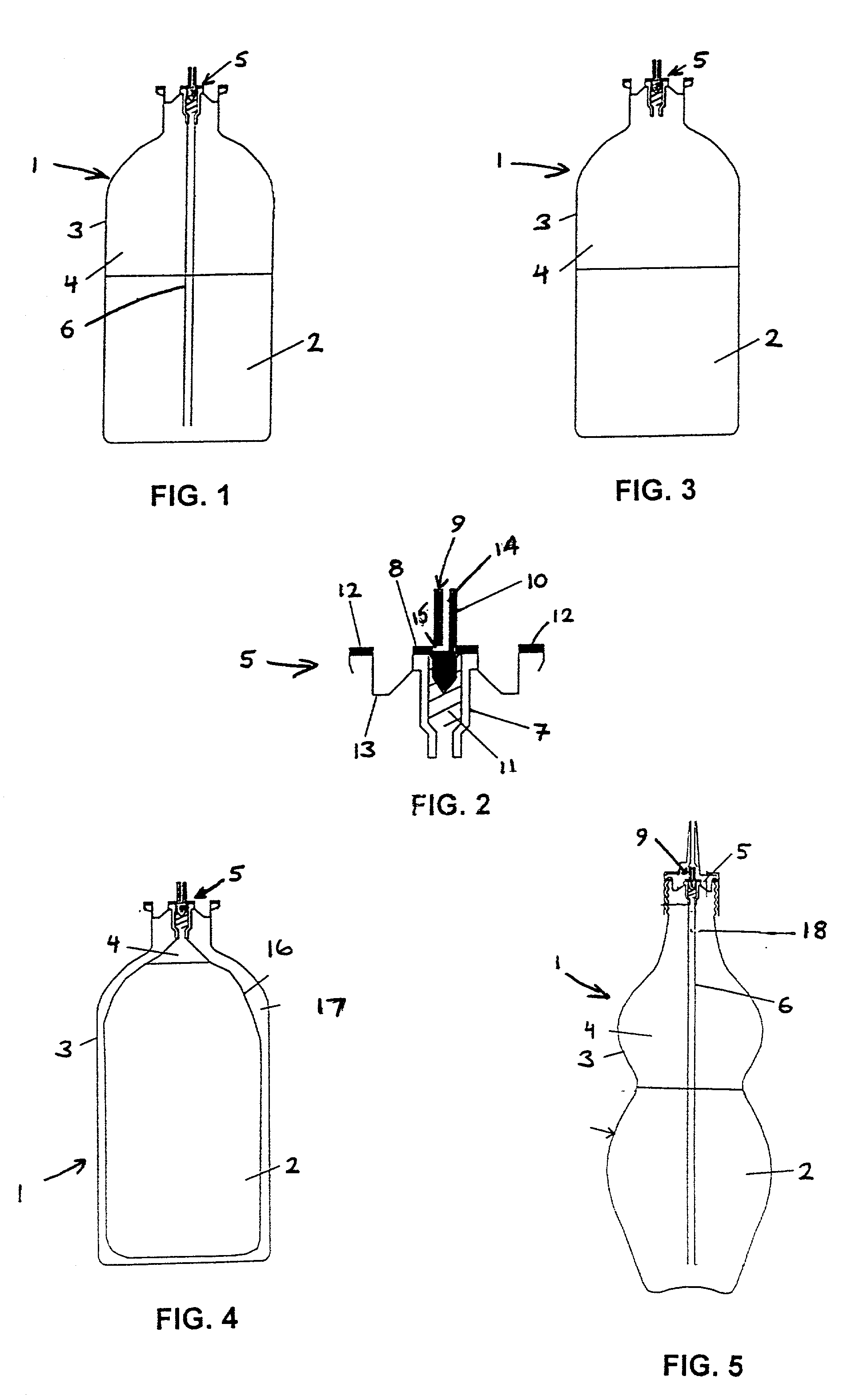Effervescent beverage product
a beverage product and effervescent technology, applied in the field of effervescent beverage products, can solve the problems of carbonic acid odor, carbonic acid odor unpleasant, oxygen packaged with the beverage to escape, etc., and achieve the effect of reducing the chance of the nozzle becoming contaminated
- Summary
- Abstract
- Description
- Claims
- Application Information
AI Technical Summary
Benefits of technology
Problems solved by technology
Method used
Image
Examples
example 1
Determination of Filling Pressure for Effective Effervescence
[0095] The following experiment was conducted to determine the filling pressure that is required to produce the desired effervescence.
[0096] Gas samples containing oxygen and nitrogen in various proportions (molar fraction of O.sub.2 of 0.0, 0.25, 0.5, 0.75, 1.0) were prepared and used to fill a beverage dispenser as shown in FIG. 3 using a variety of filling pressures. The dispensers were tested to see whether they produced a fine smoke-like effervescent fluid.
[0097] The samples were prepared and tested in duplicate to check reproducibility. All temperatures given were measured using a thermocouple probe.
[0098] For each sample, the following protocol was observed:
[0099] (1) 300 ml of tap water at 10+0.5.degree. C. was poured into a strong polyethylene terephthalate ("PET") bottle of 28 g mass and 520 ml brimful capacity. The bottle was then left to equilibrate in a temperature-controlled bath also at 10+0.5.degree. C.
[010...
example 2
Effervescence Obtained Using Gas Mixtures
[0110] The following experiments were conducted to determine whether the desired effervescence is obtained using a gas mixture that contains a gas that is sparingly soluble in water as well as a gas that is soluble in water.
[0111] Twelve experiments were conduced in accordance with the following protocol. The experimental set-up is shown in FIG. 19 and involves using the second preferred embodiment of the beverage product shown in FIG. 3. All temperatures given were measured using a thermocouple probe.
[0112] (1) 300 ml of tap water at 10.+-.0.5.degree. C. was poured into a strong polyethylene terephthalate ("PET") container (labelled 3 in FIG. 19) of 28 g mass and 520 ml brimful capacity. The container 3 was then left to equilibrate in a temperature-controlled bath also at 10.+-.0.5.degree. C.
[0113] (2) Twelve experiments were performed, referred to in the following by letters "A" to "L" inclusive. These experiments differed in the way gas wa...
PUM
 Login to View More
Login to View More Abstract
Description
Claims
Application Information
 Login to View More
Login to View More - R&D
- Intellectual Property
- Life Sciences
- Materials
- Tech Scout
- Unparalleled Data Quality
- Higher Quality Content
- 60% Fewer Hallucinations
Browse by: Latest US Patents, China's latest patents, Technical Efficacy Thesaurus, Application Domain, Technology Topic, Popular Technical Reports.
© 2025 PatSnap. All rights reserved.Legal|Privacy policy|Modern Slavery Act Transparency Statement|Sitemap|About US| Contact US: help@patsnap.com



